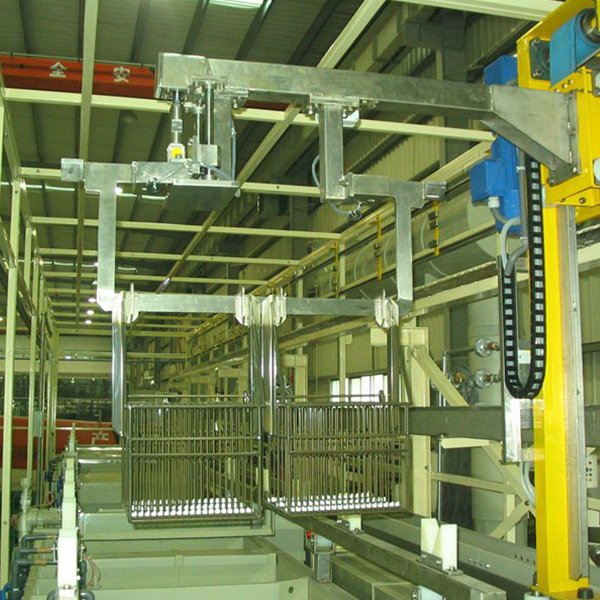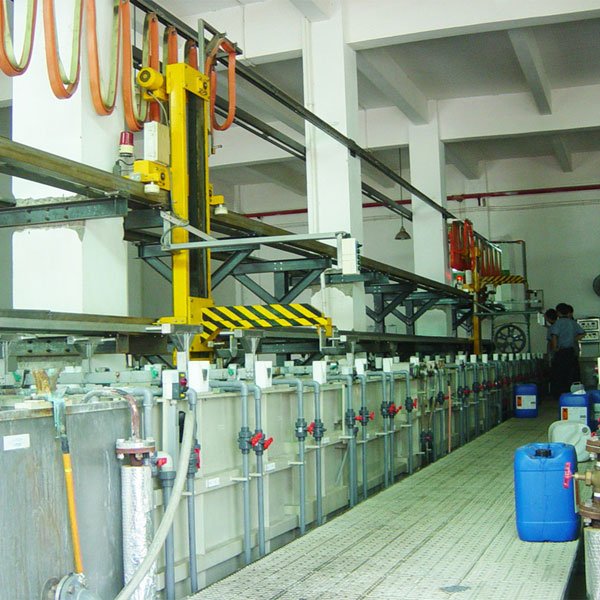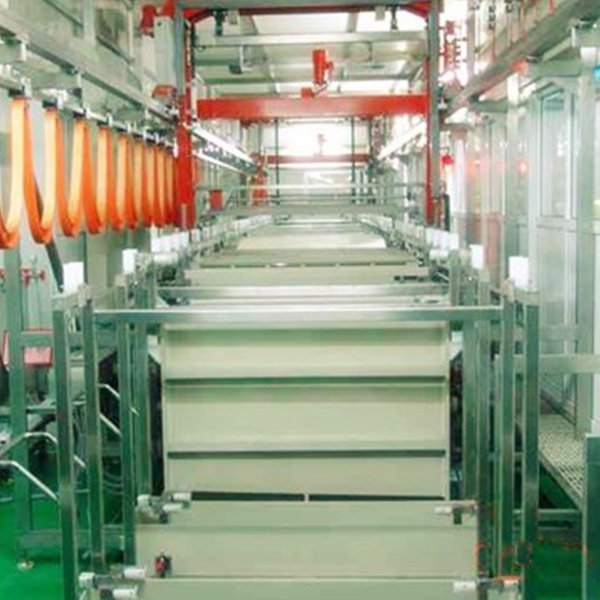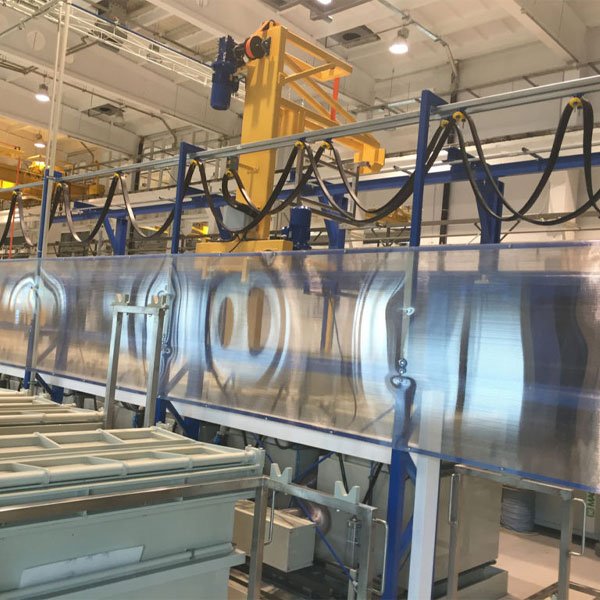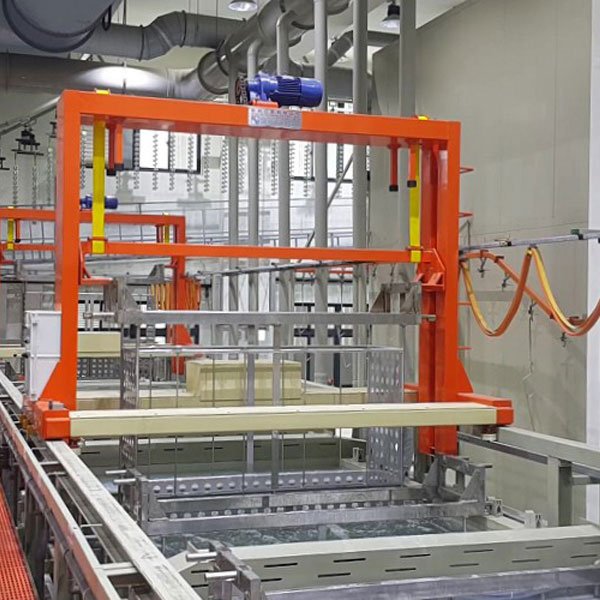As we create and execute specific hardware and software components for each customer, our automation centre can satisfy any production need.
All of our systems offer integrated management of operating parameters while taking into account process and, as a result, product certification (statistical process control, certification of each production lot, etc.).
In the event of a plant breakdown, in addition to our tele-assistance service, the customer is given a practical video-guide for troubleshooting issues and resuming the process quickly. The entire loading process can be automated, including checking different lots with barcode readers, weighing different loads, using single item identification cameras, controlling a loading robot, or using automatic loading/unloading systems.
Acid Copper Plating/Pattern Platting
To achieve the aim of interconnection and intercommunication between the board and the board, and to achieve strong conductivity, the printed circuit board must be metallized and deposited on the hole wall surface of the through hole after a series of operations. Taking everything into account, copper metal is the most widely used deposition material in the business. Currently, hole metallization is usually done in two steps: electroless plating and electroplating.
Copper sulphate, sulfuric acid, chloride ions, and organic additives such as brighteners (grain refiners), suppressors, and levelling agents are all used in sulfuric acid copper electroplating baths [7-12]. In the presence of chloride ions, the Wetter (suppressors, high molecular weight polyether compounds, and polyoxyalkylene glycols) has a polarising effect. Depolarizing brighteners (sulfopropyl sulphides, for example) speed up the deposition process.
The grain refiners are brightener compounds, which are smaller molecules than the wetter molecules. The leveller adsorbs preferentially around the cathode’s most negatively charged sites, slowing plating rates in high current density zones. The secondary and tertiary current distributions are affected by organic additions. They supervise the deposition process and the metal deposits’ quality.
PTH/Panel Platting
The whole copper surfaces on both sides of the substrate, as well as the hole walls, are plated to a desired final thickness during panel plating. While even a small PCB requires a substantial current source, the final result is a flat, shiny copper surface that is simple to clean and prepare for further processing. The requirement to use negative artwork to expose the circuit layout onto the more prevalent contrasting reversing dry-film photoresists is a serious issue for those without access to a photoplotter (contrast preserving films have been introduced from time to time but never seem to stay around for very long).
When you etch a panel plated board, you remove the majority of the material you plated, so an increased copper loading in your etchant exacerbates the burden of extra anode bank erosion.
Black Oxide Line
Coating ferrous materials, stainless steel, copper, copper based alloys, zinc, and other materials using a chemical coating method is known as black oxide coating. It coatings things in iron oxide before using them. This has numerous advantages. It lowers light reflection for starters.
A black oxide coating causes a chemical reaction on a metal part’s surface, turning it black. On the surface of the metal, black oxidation produces magnetite (Fe3O4), an iron-oxygen alloy. The chemical process that creates magnetite on a metal part’s surface is triggered by dipping it in a heated, alkaline liquid for a certain period of time.
For a wide range of ferrous metals, black oxide coatings are used for aesthetics, mild corrosion protection, and to reduce light reflection. We use a rack-and-dip technique as well as barrels for a great degree of flexibility in finishing pieces of varied shapes and sizes, which is achieved by submersion into a high-temperature chemical bath.
Electrolytic Gold and Silver Plating Line
A number of chemical and physical features are shared by gold and silver. With melting temperatures of 1,065°C and 961°C, respectively, they are soft, malleable, and ductile materials. In all proportions, both crystallise in face-centered cubic structures and form stable alloys with each other. Although silver is easily destroyed by nitric acid and gold by aqua regia, both are resistant to most common acids. Alkali cyanides create compounds with both.
Both have been sought after since ancient times due to their relative scarcity. They’ve been around for a long time, and they’re still prized for decorative, monetary, and utility purposes.
“Hard Silver/Gold” and “Soft Silver/Gold” are two types of electrolytic silver/nickel gold. Hard silver/gold is utilised for silver/gold fingers (PCB edge connections), PCB contacts, and other hard-wearing locations because of its lower purity. The thickness of silver/gold may vary depending on the requirements. The purer soft silver/gold is frequently used in wire bonding applications.



